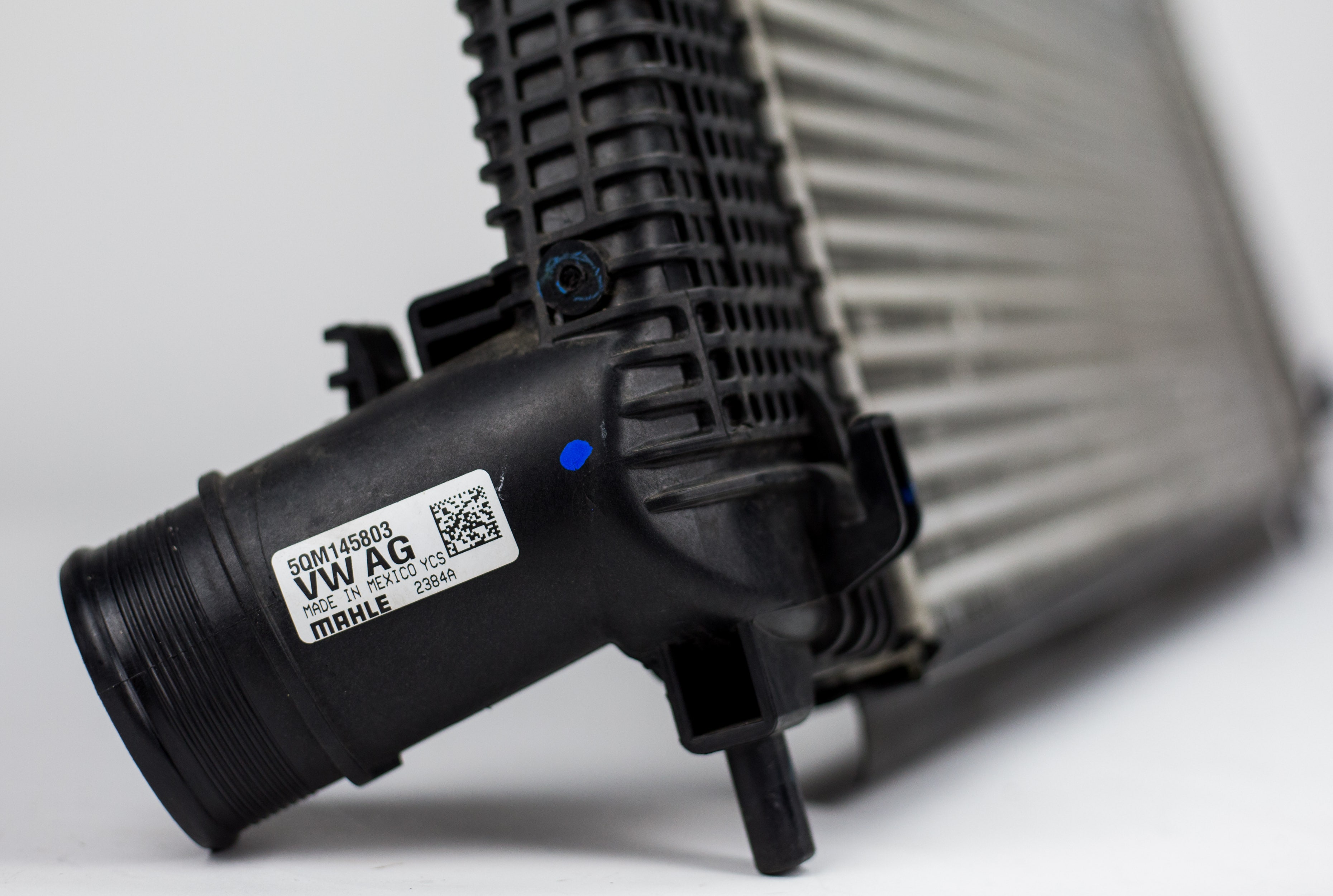
Intercooler Sandwich - 2015+ VW MK7 GTI/Golf R, Audi A/S3 Intercooler R&D Part 1 - Stock Review
The Golf GTI has been one of the most revered hot hatchbacks since its inception in the mid-1970s. While it was immediately a hit in Europe, and especially the UK, we didn't get the chance to experience Volkswagen's ingenious combination of efficiency and speed until the early 80's with the "Rabbit" GTI. The MK1's screaming 98 horsepower engine boasting Bosch's latest fuel injection technology, combined with crisp and responsive suspension, was enough to draw in a huge following. With that following came an explosion in aftermarket parts for these vehicles, from wheels to lowering kits, and just about any other trick to squeeze every drop of performance from the naturally aspirated motors equipped through the next two generations.

Photo courtesy of Will Horn
In 1997, VW upped the game. Before then, forced induction in a GTI was a serious undertaking, and something that had to be installed in your own garage or at the cost of a speed-shop technician. However, with the MK4 came the 1.8t. This meant a completely new world for tuning and bolt-on aftermarket upgrades for some serious speed. MK4 enthusiasts most likely already have visions and memories of K04 swaps, and "FrankenTurbo" mods swimming through their heads. Three generations later, and VW is still providing us hot hatch fans with a boosted Golf that's ready for some modifications.
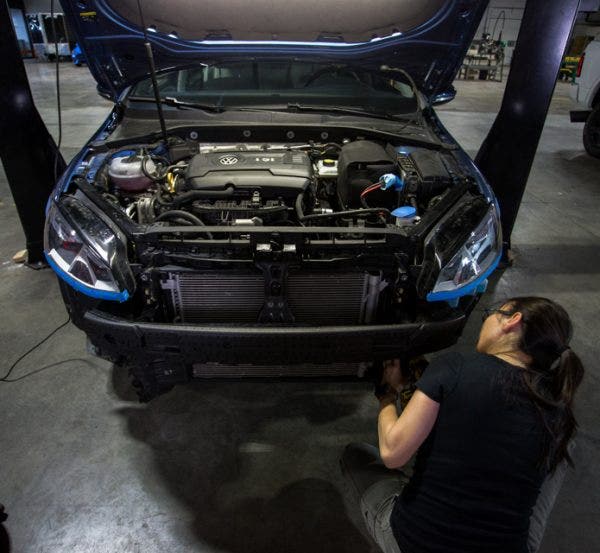
The European companies never make it easy on us, but we're up to the challenge.
When it comes to modifying turbocharged vehicles, the stock intercooler is a component that can limit the full potential of modifications, and the MK7 intercooler is no exception. German cars are always tricky once we start digging into a project, a fact solidified with our BMW F2X/F3X intercooler that started earlier this year. The common theme with designing parts for German vehicles is that they like to make efficient use of the available space. The intercooler's proximity to the radiator and AC condenser meant that we had to remove it to get a closer look.
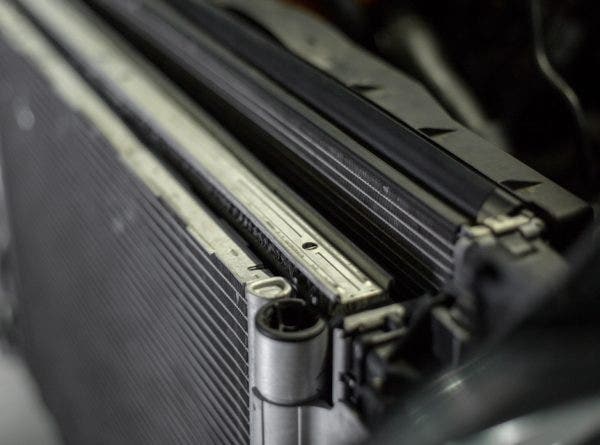
The stock design packs the AC condenser, intercooler, and radiator close together, without much room to expand into.
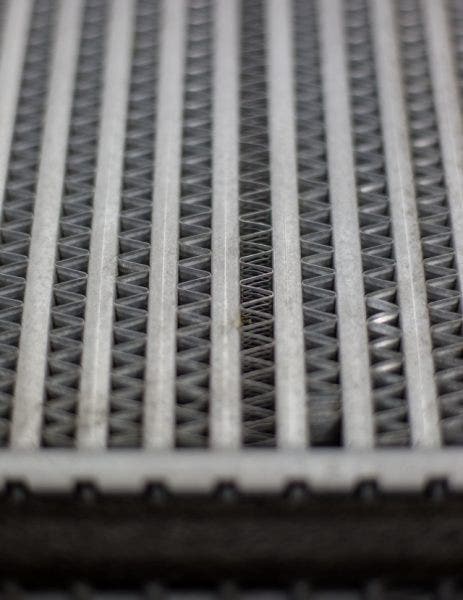
Under closer inspection, the serrated fin design reveals itself. Having staggered fins like in this example eases the balancing act between air penetration and heat dissipation.
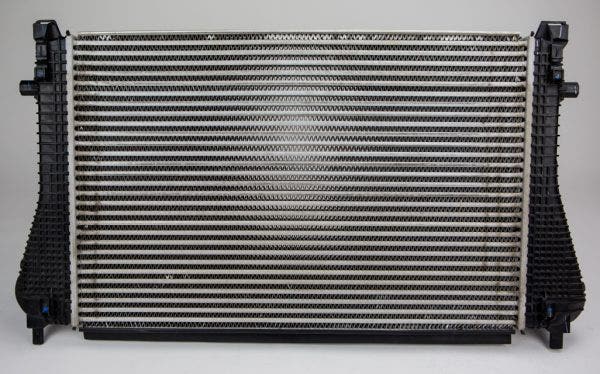
The factory intercooler has a large surface area, which in terms of an intercooler is beneficial for heat dissipation.
Once we removed the factory intercooler, the task of improving on Volkswagen's design remained a challenge. While the stock intercooler is only just over an inch thick, it still has a vast surface area, which soaks up the airflow passing through the AC condenser. In addition, VW utilized a loosely packed fin design, which is usually the opposite of what you want in an intercooler, but the engineers had their reasons. The sparsely placed fins in this tube-and-fin construction allow for adequate cooling of the charged air, but give way for the airflow to pass through to the radiator. The stock part also incorporates a serrated fins, allowing for considerable airflow through the core and improved heat dissipation.
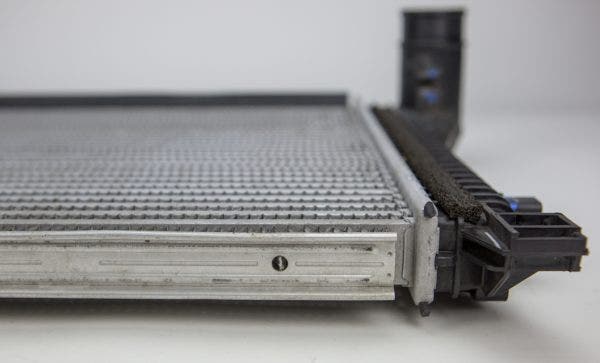
Due to the tightly packed group of heat exchangers, this unit is only about an inch thick, meaning it's susceptible to heat soak.
While the Volkswagen engineers designed an intercooler that is suitable for the everyday driver, there are some aspects that need to be improved on before turning up the boost. For starters, a tube-and-fin construction is only good when it comes to making inexpensive and light heat exchangers, regardless of the engineering tricks to help with heat dissipation. Secondly, plastic is a widely used and versatile material, but it is not necessarily the most durable in the long run. After endless cycles of heating and cooling, in addition to high boost pressure, the plastic end tanks can crack and then leak all that precious charged air. The more the boost increases with tunes, and other modifications, the more prone these end tanks are to damage.
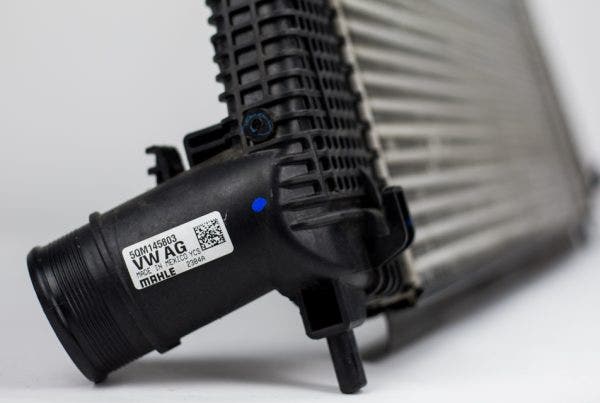
While normal commuting might not put much stress on them, plastic end tanks won't stand up to the demands of a tuned GTI.
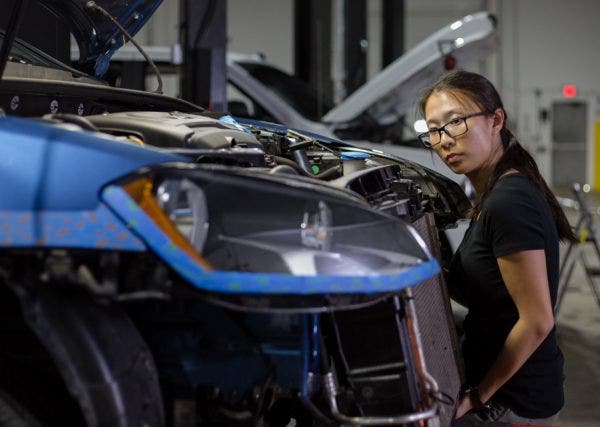
Ye can pretty much tear down a MK7 front end in her sleep at this point.
Our engineer, Ye, and lead fabricator, Mike, have been busy this past week drawing up the intercooler piping, and working on the best design for the intercooler. Stay tuned as we continue to find the right design, and for updates on the piping.
Thanks for Reading
-Nick











